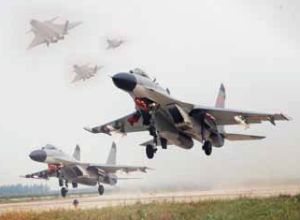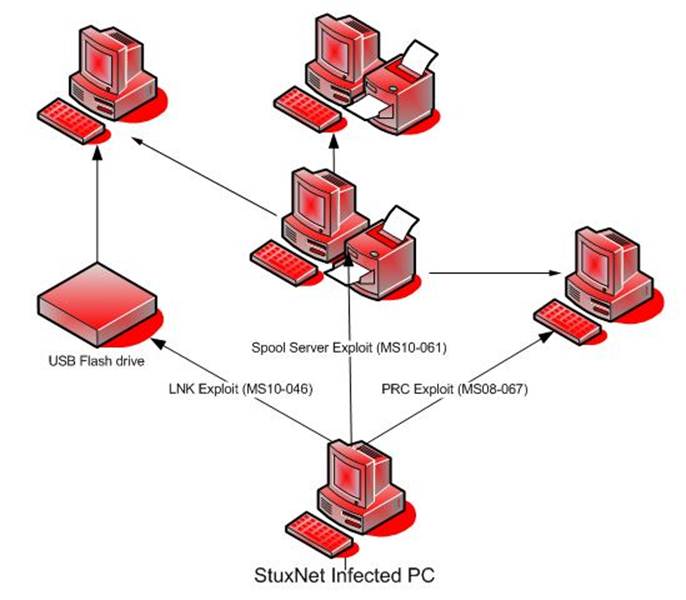PLAAF during the Deng era was also looking to improve its deterrent capability by strengthening airborne forces, enhancing quick mobility and increasing the strategic reach, which until now had been its innate weakness. It also started to perceive itself as a unique service capable of engaging in local border wars because of its intrinsic quality of reach and speed; and further strengthened by its rapid reaction force capable of attaining the laid down political objectives and end the war as quickly as possible; an earlier domain of the PLA, which ceased as a result of soul-searching by the ground forces. PLAAF during this period also started to understand the concepts of air superiority, firepower, manoeuvrability, control of electronic means and technology; all critical and without which the strategic objectives could not have been achieved. It therefore initiated significant reforms in the force structure, training and weapon systems and redefined its role with greater clarity by listing out areas of responsibility in terms of its offensive capabilities to carry out air strikes and attain air supremacy. It was almost a foregone conclusion that any future war would have to be multi-dimensional involving land, sea, air and space; therefore no single service could afford the luxury of being overbearing. Hence, it took more than three decades for the establishment to convince PLA that; ‘the largest obstacle for any ground force or a united campaign came from the air’, and the onus for this ideational shift will necessarily have to be attributed to Deng’s willingness to accept the transcendent nature of air power and Wang Hai’s surpassing influence on Deng during the Sino-Vietnam conflict. Also, soon after the Gulf war; PLA was left with no other option than to accept the gospel truth that the biggest challenge for the ground forces actually came from the air and for the first time also acknowledging the inherent limitation in the concept of PLA being the sole underwriter to guarantee security; a prime concern for all Chinese citizens and its policy formulators. PLA as a result was left with no other choice than to coerce PLAAF to modernise and prepare itself to fight major air battles away from home. The major take-away from the period of transition was that it accentuated the role of information, high-end technology, weaponry and air power. Also the acceptance of air power being pivotal and an important element of the decision making apparatus and an independent instrument in the context of a joint campaign was a result of Deng’s broad-minded approach; which helped PLAAF transcend into becoming an offensive air force and preparing to take on the centre-stage to challenge the best in the world.
PLAAF’s aspirations
PLAAF was quick to embrace RMA after the Gulf war and by the turn of the century started consolidating on various aspects like informatised and asymmetric warfare techniques. It augmented its earlier capacity to carry out air strikes, reconnaissance and early warning, air and missile defence and enhance its strategic aerospace power CHINESE HAUTEUR An ISO 9001:2008 Certified Magazine power projection capability in an effort to build itself into a strategic air force by 2020. The 2010 white paper further states that there has been a concerted effort on part of PLAAF to accelerate the transition from being a tactical air force looking at territorial air defence to now being able to participate in both offensive and defensive operations2. Hu Jintao had also said that “we will ensure that our armed forces are capable of winning a war in the information age, modernisation of weapons and equipment should be accelerated and personnel training enhanced. We will gradually increase spending on national defence as the economy grows and continue to modernise national defence and the armed forces.”
 |
Resource constraints and the rapid rise of second artillery may have initially contributed to the slow pace of PLAAF’s modernisation in the early 1990s; however the pace of China’s economic development and the surge in the arms trade with countries in South America, Africa, Iran and Pakistan could have offset PLAAF’s early setback
China’s use of airpower in the 21st century is also guided by the philosophy of coercion aimed at compelling to change the behaviour of the target State and then become a midwife to the continuation of the State’s policy by other means. It also acknowledged the huge potential of airpower being an efficacious tool to influence international disputes both through active and passive means, which could further also be employed for decapitation of leadership and ‘denial’ without the deployment of any credible ground threat. At the same time they were cautious against bequeathing overarching responsibility in one single ‘power’; mainly because of the limited capability of its armed forces and more so of its ‘airpower’ assets. They believed that with limited capability, changing regional architecture and under the weight of geopolitics, no single ‘power’ could win for them future wars against a strong and a robust adversary like America. Hence to bridge the gap between aspirations and capabilities; the Chinese resorted to the concept of ‘jointness’ which in their design included ground forces, air force, navy, second artillery and also the space based assets. Although PLAAF in the past has had issues over control of space-based assets, but has never laid too much importance other than to state the obvious that aerospace power has a broader scope as compared to airpower and both have an inherent capacity to guarantee ‘air superiority’. They also believed that building a credible air force with enhanced fire-power capability, will largely help them to offset their major shortcomings in the face of a powerful adversary and therefore airpower in their calculus was turning out to be an extremely powerful tool of PRC’s coercion strategy3. Attainment of ‘air superiority’ continues to be the soul for all future wars whether fought in an environment of a joint campaign or an independent air campaign; probably inspired by Colonel John Warden III, when he stated that “no country has won a war in the face of enemy air superiority, no major offensive has ever succeeded against an opponent who controlled the air and no defence has sustained against an enemy who had air superiority”4. PLAAF’s larger aim is to evolve a seamless aerospace strategy with a potential to be spread out over a battle space area envisaged larger than ever in the past. It initiated this process by inducting multiple platforms, developing potent EW capabilities, integrating combat and control system in a modern air combat environment with enhanced capabilities and lethal strike option. PLAAF was in a state of transition, redefining its earlier mission exclusively responsible for providing support to its ground forces to now graduating and becoming an independent service capable of providing deterrence and conducting strategic attack. Over the years PLAAF has made significant inroads in developing concepts related to aerospace power in a joint environment involving PLAN, second artillery and space based assets.
————————–
2 http://news.xinhuanet.com/english2010/china/2011–03/31/c_13806851.htm,White paper on China’s National Defence 2010, accessed on July14, 2011.
3 According to Mark Stokes, coercive power is different from brute force and attempts to dissuade the adversary from taking an action and therefore can consist of diplomatic coercion and military coercion. As per Daniel L Byman’s definition both military and diplomatic coercion can force another government to choose between making concessions or suffering the consequences.
4 Colonel John A Warden III, The Air Campaign, Planning for Combat, (Washington: Pergamon-Brassey’s, 1989), pp.10.

 von
von 
